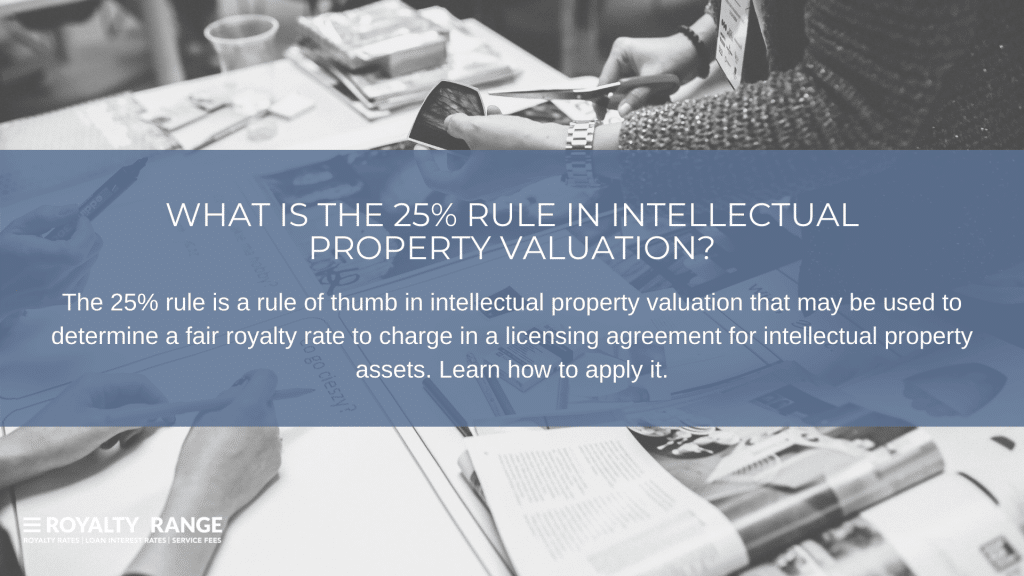What is the 25% rule in intellectual property valuation?

Kris (Kestutis) Rudzika |
May 15, 2021

In intellectual property valuation, the 25% rule is a rule of thumb that can be used to work out a fair royalty rate to charge in a licensing agreement for intellectual property assets. The main principle is that the licensee pays the licensor 25% of the gross profits generated by sales of the product or service that uses the intellectual property. (The licensee gets 75%.)
Why are the profits split 25:75?
The reason the rule allocates 75% of the gross profits to the licensee is because it assumes that the licensee took on the majority of the risk involved in developing the product or service that uses the IP, and bringing it to market. As such, it is only fair that they retain the bulk of the profits. Similarly, the 25% rule assumes that the licensor invented the intellectual property but does not take on the risk associated with developing, marketing or selling the product or service in question, and as such they receive a smaller 25% share of the profits.
The 25% rule is an income-based approach
The 25% rule can be used as a starting point for valuing and setting fair royalty rates for intellectual property assets including copyrights, trademarks and patents in licensing deals. It is an example of an income-based approach. There are three main approaches for IP valuation: 1) the income approach; 2) the market approach; and 3) the cost approach.
It is no longer used to calculate reasonable royalties in IP infringement cases
In the past, the 25% rule was used in courts as a way of calculating reasonable royalty rates in patent or trademark infringement cases. However, in 2011, it was ruled that the 25% rule cannot be used to calculate damages for infringement as it does not provide an acceptable level of evidence that takes into account the actual circumstances of the case in question.
In Uniloc USA, Inc. v. Microsoft Corp (2011), the Federal Circuit called it “a fundamentally flawed tool for determining a baseline royalty rate in a hypothetical negotiation” because it “fails to tie a reasonable royalty base to the facts of the case at issue”. As such, the 25% rule can no longer be used as a method of calculating a reasonable royalty rate in courts.
How do you use the 25% rule to calculate a royalty rate?
Before you use the 25% rule to value intellectual property or work out a royalty rate, it is important to remember that it is a rule of thumb. It can be used as a starting point but you may find that a slightly different allocation of profits is more suitable depending on the individual terms of the licensing agreement and the allocation of risk between the parties.
To use the 25% rule to work out a royalty rate for a licensing agreement, you need to start by estimating the gross profits that the licensee can expect to generate from the intellectual property in a set period of time. Divide this by the estimated net sales for that same period, and then multiply that by 25%. This will give you a royalty rate percentage. When it is time for the licensee to pay their royalty fee, they will simply multiply the royalty rate percentage by the actual net sales figure for the time period that they are compensating the licensor for.
Is the 25% rule a reliable method for valuing intellectual property?
You need to remember that intellectual property valuation is complicated and the 25% rule doesn’t provide an absolute method of working out royalties. It is best thought of as a starting point for your analysis and a framework for valuing your intellectual property assets. It doesn’t necessarily take into account the individual circumstances of your licensing agreement, so you will need to ensure your analysis keeps these important things in mind.
Get data for your intellectual property valuation today
To access comparables data for your IP valuation, try RoyaltyRange One Search today.
Request One Search
We will perform the search and deliver the initial results within hours, at no cost.




